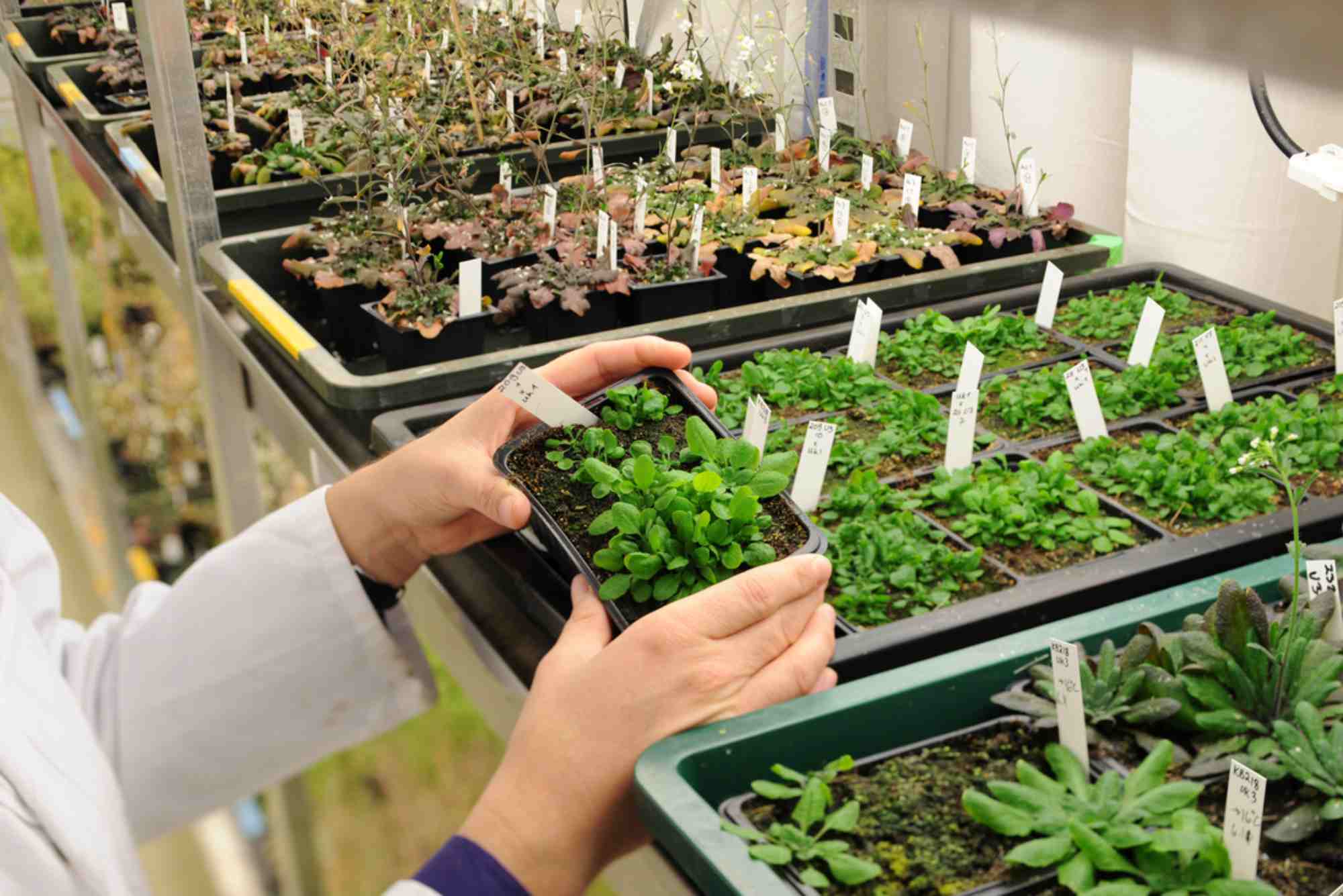Autotrophic Nutrition: Definition, Examples, and Importance
Autotrophic nutrition plays a central role in sustaining life on Earth. It refers to a mode of nutrition where organisms produce their own food using simple inorganic materials like carbon dioxide and water. Unlike heterotrophs, which rely on consuming other organisms, autotrophs can synthesize organic compounds using energy from sunlight or inorganic chemical reactions. This self-sustaining nutritional strategy is not just a survival mechanism—it forms the base of nearly every food chain and supports entire ecosystems.
Understanding autotrophic nutrition provides insights into how life maintains balance, recycles nutrients, and responds to environmental changes. From green plants to certain bacteria, autotrophs are nature’s producers. Without them, higher forms of life would have no source of energy.
What Is Autotrophic Nutrition?
Autotrophic nutrition is the biological process by which organisms create their own food using light or chemical energy. The term “autotrophic” comes from the Greek words “auto,” meaning self, and “troph,” meaning nourishment. This process occurs in autotrophs—organisms capable of synthesizing organic substances like glucose from inorganic substances.
These organisms use two main energy sources: sunlight or chemical reactions. The energy enables them to convert carbon dioxide and water into carbohydrates and other organic molecules that sustain their cellular activities. This process contrasts with heterotrophic nutrition, where organisms consume pre-formed organic substances.
Autotrophic organisms are typically found at the beginning of food chains. Their ability to generate biomass from non-living sources enables the survival of all higher organisms, making them indispensable to life on Earth.
Types of Autotrophic Nutrition
Autotrophic nutrition exists in two primary forms: photosynthetic and chemosynthetic. Both forms help in synthesizing organic compounds, but they use different energy sources.
Photosynthetic Autotrophic Nutrition
Photosynthetic autotrophs use sunlight as an energy source. This form is the most widespread type of autotrophic nutrition and is common among green plants, algae, and some bacteria.
These organisms contain chlorophyll, a green pigment that captures solar energy. The light energy is used to convert carbon dioxide and water into glucose during the process known as photosynthesis. Oxygen is released as a by-product, which is vital for aerobic life.
Chemosynthetic Autotrophic Nutrition
Chemosynthetic autotrophs derive energy from chemical reactions instead of sunlight. This type of nutrition is found in certain bacteria that live in extreme environments, such as deep-sea hydrothermal vents or sulfur springs.
These bacteria oxidize inorganic compounds like hydrogen sulfide, ammonia, or ferrous ions to produce energy. They then use this energy to synthesize organic molecules from carbon dioxide. Chemosynthesis supports ecosystems in environments where sunlight cannot penetrate.
Examples of Autotrophic Organisms
Autotrophic organisms vary widely across ecosystems and include both microscopic and macroscopic life forms. Here are some notable examples:
Green Plants
Green plants are the most common photosynthetic autotrophs. From grasses in meadows to towering trees in forests, they capture sunlight using chlorophyll and convert it into chemical energy through photosynthesis. These plants form the foundation of terrestrial food chains and provide oxygen essential for life.
Algae
Algae, including microscopic phytoplankton and larger seaweeds, are aquatic autotrophs that perform photosynthesis. They are vital to marine food webs and contribute significantly to global oxygen production.
Cyanobacteria
Also known as blue-green algae, cyanobacteria are among the oldest known autotrophs. They use photosynthesis and played a major role in transforming Earth’s early atmosphere by adding oxygen.
Sulfur Bacteria
These bacteria perform chemosynthesis using hydrogen sulfide as an energy source. Found near deep-sea vents, sulfur bacteria form symbiotic relationships with marine animals like tube worms, sustaining entire ecosystems in the absence of sunlight.
Nitrifying Bacteria
These soil bacteria are chemosynthetic and help convert ammonia into nitrates—a form of nitrogen that plants can absorb. They play a crucial role in the nitrogen cycle and enhance soil fertility.
Importance of Autotrophic Nutrition
Autotrophic nutrition is not just about survival; it’s about sustaining life on Earth in a balanced, interconnected way. Its importance spans ecological, environmental, and economic dimensions.
Primary Producers in Food Chains
Autotrophs form the base of all ecological food chains. They convert energy from the sun or chemicals into a usable form, which is then transferred to herbivores, carnivores, and omnivores. Without autotrophs, there would be no energy input into ecosystems.
Oxygen Production
Photosynthetic autotrophs, especially green plants and algae, are responsible for releasing oxygen into the atmosphere. This oxygen supports aerobic respiration in animals and humans, making it essential for most life forms.
Carbon Dioxide Regulation
By absorbing carbon dioxide from the atmosphere, autotrophs help mitigate climate change. They act as natural carbon sinks and reduce the greenhouse effect, thereby contributing to global climate stability.
Soil Fertility and Agriculture
Autotrophic organisms like nitrifying bacteria enhance soil fertility by making essential nutrients available to plants. Green plants themselves, being autotrophs, are the primary food sources in agriculture. Understanding their nutrition helps farmers optimize crop yields through light exposure, soil management, and irrigation.
Ecosystem Stability
Autotrophs support biodiversity by creating and maintaining habitats. Forests, grasslands, and marine ecosystems rely on the energy and structure provided by autotrophic organisms.
Industrial and Medical Applications
Certain autotrophic bacteria are used in biotechnology for wastewater treatment and biofuel production. Their unique metabolic pathways also offer potential for developing antibiotics and other medical treatments.
How Do Autotrophs Perform Photosynthesis?
Photosynthesis in autotrophs takes place mainly in chloroplasts, using sunlight, water, and carbon dioxide. The general equation is:
6CO₂ + 6H₂O + sunlight → C₆H₁₂O₆ + 6O₂
This process involves two main stages: the light-dependent reactions and the light-independent reactions (also known as the Calvin cycle). In the light-dependent stage, solar energy is captured and used to split water molecules, releasing oxygen. In the light-independent stage, carbon dioxide is fixed into glucose molecules.
These reactions are tightly regulated and require various enzymes, coenzymes, and pigments. Environmental factors like light intensity, temperature, and CO₂ levels influence the rate of photosynthesis.
Evolutionary Significance of Autotrophic Nutrition
Autotrophic nutrition was one of the earliest biological processes to evolve. Cyanobacteria began photosynthesizing around 2.5 billion years ago. This led to the Great Oxygenation Event, which drastically increased atmospheric oxygen and enabled the evolution of aerobic organisms, including animals and eventually humans.
The evolution of autotrophic nutrition allowed for the diversification of life and the development of complex ecosystems. Without it, life as we know it would not exist.
Autotrophic Nutrition vs. Heterotrophic Nutrition
The distinction between autotrophic and heterotrophic nutrition is fundamental. Autotrophs make their own food; heterotrophs consume other organisms for energy. While heterotrophs rely on autotrophs for food and oxygen, autotrophs are self-sufficient.
This dependency highlights why autotrophs are essential. A disruption in autotrophic organisms—such as deforestation or ocean acidification—can cause ripple effects throughout food webs, leading to ecological imbalances.
Why Autotrophic Nutrition Matters
Autotrophic nutrition is a cornerstone of life on Earth. It enables the flow of energy through ecosystems, maintains atmospheric balance, and supports food production. From the oxygen we breathe to the food we eat, the work of autotrophs quietly powers our daily existence.
As environmental challenges grow, understanding and protecting autotrophic organisms becomes increasingly important. Whether it’s conserving forests, reducing pollution, or promoting sustainable agriculture, every effort to support autotrophic life helps safeguard the planet’s future.
If you’re passionate about biology or environmental science, continue exploring how nature’s self-sustaining systems work. The more we understand autotrophic nutrition, the better we can protect the ecosystems that depend on it—and that includes us.
FAQs
What is the definition of autotrophic nutrition?
Autotrophic nutrition is the process by which organisms produce their own food using light or chemical energy and inorganic substances like CO₂ and water.
What are two types of autotrophic nutrition?
The two main types are photosynthetic (using sunlight) and chemosynthetic (using energy from chemical reactions).
What organisms use autotrophic nutrition?
Green plants, algae, cyanobacteria, and some bacteria like nitrifying and sulfur bacteria are autotrophs.
How is autotrophic nutrition important to ecosystems?
It forms the base of food chains, produces oxygen, and maintains carbon balance, supporting all higher life forms.
Is photosynthesis the only form of autotrophic nutrition?
No. While photosynthesis is common, chemosynthesis is another form used by some bacteria in extreme environments.
Can humans ever be autotrophic?
Humans are heterotrophs by nature. While synthetic biology may someday create semi-autotrophic organisms, humans biologically depend on consuming organic matter.





